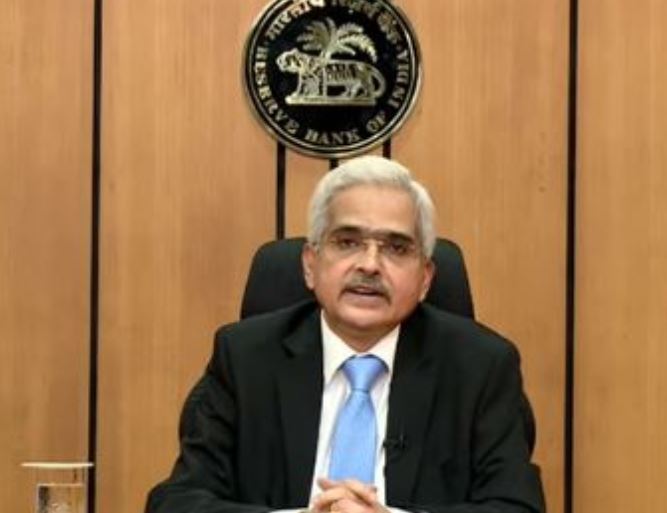 The Reserve Bank of India has reduced the reverse repo rate by 25 basis points from 4% to 3.75%, Governor Shaktikanta Das announced on Friday
The Reserve Bank of India has reduced the reverse repo rate by 25 basis points from 4% to 3.75%, Governor Shaktikanta Das announced on Friday
Addressing the media, the Governor said, “On April 15, the amount absorbed under reverse repo operations was `6.9 lakh crore. In order to encourage banks to deploy these surplus funds in investments and loans in productive sectors of the economy, it has been decided to reduce the fixed rate reverse repo rate under the liquidity adjustment facility (LAF) by 25 basis points from 4.0 per cent to 3.75 per cent with immediate effect. The policy repo rate remains unchanged at 4.40 per cent, and the marginal standing facility rate and the Bank Rate remain unchanged at 4.65 per cent.”
The Governor said, “Turning to the status of banking operations since the nationwide lockdown was imposed by the Government of India from March 25, 2020, the RBI has taken a number of steps to ensure normal business functioning by the entire banking sector. As a result, the payment infrastructure is running seamlessly. Banks have been required to put in place business continuity plans to operate from their disaster recovery (DR) sites and/or to identify alternate locations for critical operations so that there is no disruption in customer services.”
RBI has decided to provide special refinance facilities of Rs 50,000 crores to National Bank for Agriculture & Rural Development, Small Industries Development Bank of India, and National Housing Bank to enable them to meet sectoral credit needs.
On April 1, 2020 the RBI had announced an increase in the ways and means advances (WMA) limit of states by 30 per cent. It has now been decided to increase the WMA limit of states by 60 per cent over and above the level as on March 31, 2020 to provide greater comfort to the states for undertaking COVID-19 containment and mitigation efforts, and to plan their market borrowing programmes better. The increased limit will be available till September 30, 2020, Das said.
The Governor said, “On March 27, 2020 the Reserve Bank had announced certain regulatory measures to mitigate the burden of debt servicing brought about by disruptions on account of COVID-19 and to ensure the continuity of viable businesses. Based on a review of the rapidly evolving situation, and consistent with the globally coordinated action committed to by the Basel Committee on Banking Supervision to alleviate the impact of Covid-19 on the global banking system, additional regulatory measures are being announced today.”
Das said, “On April 14, International Monetary Fund (IMF) released its global growth projections revealing that in 2020, the global economy is expected to plunge into the worst recession since ‘The Great Depression.”
“For 2020-21, International Monetary Fund projects sizable reshaped recoveries, close to 9 percentage points for the global GDP. India is expected to post a sharp turnaround & resume its pre-covid, pre-slowdown trajectory by growing at 7.4% in 2020-21,” he said.
“IMF Economic Counsellor has named it ‘The Great lockdown’ estimating cumulative loss to global GDP over 2020-21 at around 9 trillion US dollars, which is greater than the economies of Japan & Germany combined,” he added.
“The RBI will monitor the evolving situation continuously and use all its instruments to address the daunting challenges posed by the pandemic. The overarching objective is to keep the financial system and financial markets sound, liquid and smoothly functioning so that finance keeps flowing to all stakeholders, especially those that are disadvantaged and vulnerable. Regulatory measures that have been announced so far – including those made today – are dovetailed into the objective of preserving financial stability,” the Governor said.











